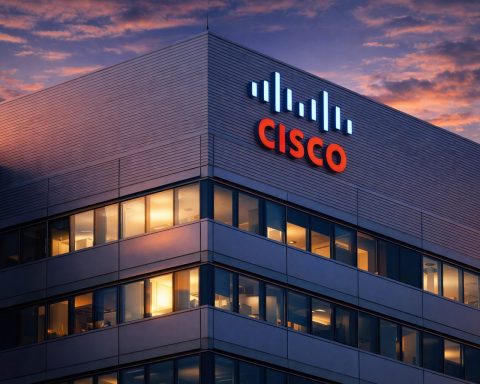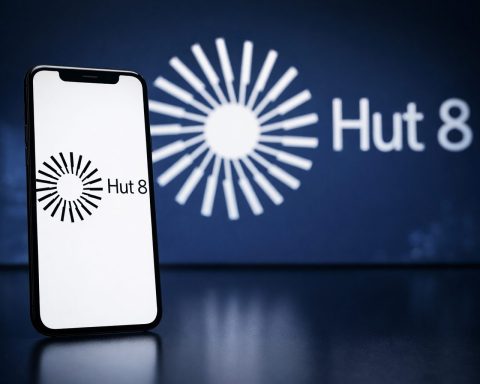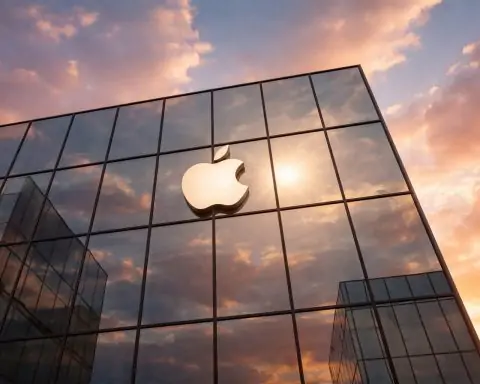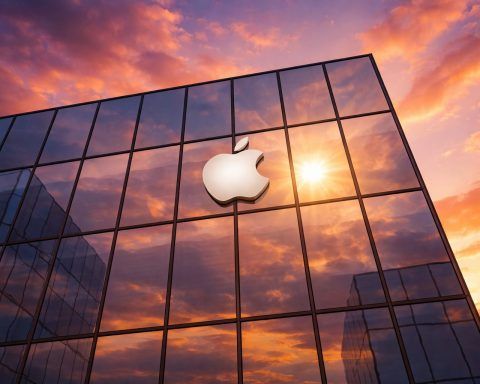Published: November 27, 2025
Apple is on track to end Samsung’s 14‑year run as the world’s largest smartphone maker in 2025, powered by a surge in demand for the new iPhone 17 lineup and a long‑delayed global upgrade cycle.
Fresh forecasts from Counterpoint Research, widely reported across global media, project that Apple will ship around 243 million iPhones this year, compared with 235 million smartphones from Samsung. That would give Apple about 19.4% of worldwide smartphone shipments, just ahead of Samsung’s projected 18.7% share. [1]
If the projection holds, 2025 will be the first time in 14 years that Apple tops Samsung in annual smartphone shipments under Counterpoint’s methodology — a symbolic shift in one of tech’s most closely watched rivalries. [2]
Key numbers at a glance
- Apple 2025 shipments (forecast): ~243 million units
- Samsung 2025 shipments (forecast): ~235 million units [3]
- Projected 2025 global market share: Apple 19.4% vs Samsung 18.7% [4]
- Growth vs 2024: Apple shipments up about 10% year‑on‑year, vs ~3.3% growth for the overall smartphone market [5]
- Timeline: Counterpoint expects Apple to hold the top spot through at least 2029. [6]
Shipments measure how many devices vendors send into retail and carrier channels rather than final consumer sales, but analysts and investors treat them as a key indicator of demand and market expectations. [7]
What the new forecast actually says
Counterpoint’s Global Smartphone Forecast for 2025 – published on November 26 – lays out a smartphone market that is finally growing again after several sluggish years, with total shipments expected to rise roughly 3.3% this year. Apple, however, is expected to grow more than three times faster, with iPhone shipments up around 10%. [8]
The research firm expects Apple to:
- Ship roughly 8 million more phones than Samsung in 2025
- Capture the largest share of the global market for the year
- Maintain that leadership position through 2029, assuming strong refresh cycles and product diversification into more price tiers and form factors [9]
Reports from outlets including news.com.au, CNBC (via syndication and social posts), MarketWatch, The Verge, and regional media in India and South Korea all cite the same Counterpoint numbers, underscoring how widely the forecast is being picked up on November 27. [10]
iPhone 17: The breakout star of 2025
The single biggest driver behind Apple’s projected leap is the iPhone 17 family, which launched in September and includes:
- iPhone 17
- iPhone 17 Air (a new, thinner mid‑tier model)
- iPhone 17 Pro
- iPhone 17 Pro Max
According to Counterpoint’s data, the iPhone 17 series delivered around 12% higher sales in its first four weeks than last year’s iPhone 16 lineup. [11]
Analysts and reports highlight several key factors:
- Model mix: The new iPhone 17 Air has replaced the “Plus” model and positioned itself as a lighter, thinner device designed to sit between the base and Pro lines, giving Apple more flexibility on pricing and features.
- Demand in key markets: Apple is seeing double‑digit growth in iPhone 17 sales in both the United States and China, with some estimates pointing to roughly 12% growth in the US and about 18% in China compared with the iPhone 16 cycle. [12]
- Tariff resilience: Despite worries that tariffs might dampen demand, Counterpoint says the impact on early iPhone 17 sales has been “lower than expected.” [13]
Even China’s cautious consumer environment seems to be bending in Apple’s favor. During this year’s extended Singles’ Day shopping period, Apple alone turned what would have been a 5% decline in smartphone sales into overall 3% year‑on‑year growth, taking about 26% of all smartphone units sold during the festival, according to Counterpoint figures cited by Reuters. [14]
Why the smartphone market is suddenly growing again
The Apple–Samsung shake‑up is happening against the backdrop of a market that, after years of stagnation, is finally showing signs of life.
Recent reports from IDC and other research firms show that global smartphone shipments grew roughly 2.6–3.5% year‑on‑year in Q3 2025, depending on the tracking methodology. [15]
Three big forces are driving the rebound:
- The long upgrade cycle finally hits critical mass
Hundreds of millions of users who bought phones during the COVID‑era boom in 2020–2021 are now due for upgrades, and many are finally replacing aging devices. Counterpoint describes the 2025 replacement wave as an “inflection point” for the market. [16] - AI features are now mainstream, not a niche
Samsung, Apple and Chinese vendors have put generative and on‑device AI at the center of their marketing. Samsung’s Galaxy S25 line, for example, leans heavily on Galaxy AI for features like Now Brief, on‑device personal data processing, and enhanced camera capabilities. [17] - Foldables and premium designs are pulling the market up
Foldable phones remain a small slice of shipments, but they anchor a premium halo for brands, while more conventional flagships like iPhone 17 Pro and Galaxy S25 Ultra continue to push camera and display upgrades that entice high‑end buyers. [18]
What this means for Samsung and the Galaxy S25 generation
Samsung is not shrinking — it’s just growing more slowly than Apple in 2025.
Counterpoint expects Samsung’s shipments to rise by about 4.6% this year, even as it relinquishes the top spot. [19]
The company’s strategy now has two main pillars:
- Premium Galaxy S25 and S25 Ultra at the top
The 2025 Galaxy S25 range focuses on AI‑driven experiences (Galaxy AI), longer battery life, and upgraded camera systems. Samsung’s own marketing emphasizes features like Now Brief, Audio Eraser for cleaner video audio, and powerful on‑device AI models running on its custom Snapdragon 8 Elite for Galaxy chip. [20] - Aggressive A‑series push in emerging markets
Counterpoint and multiple news reports note that Samsung is leaning on its A‑series mid‑range phones to defend share in developing economies, where price sensitivity is high and Apple’s premium‑only strategy still leaves room for Android rivals. [21]
Analysts also caution that while Apple may top shipments in 2025, the margin over Samsung is slim. An 8‑million‑unit gap in a market of more than a billion smartphones means any misstep — a supply issue, a lukewarm iPhone refresh, or an unexpectedly strong Samsung cycle — could swing the rankings back in future years. [22]
A 14‑year milestone — and some history to untangle
Much of today’s coverage describes Apple’s expected 2025 win as its first time ahead of Samsung in 14 years, or its first time on top since 2011. [23]
However, different analyst houses use slightly different tracking methods, and some have already credited Apple with short‑lived victories in the past. IDC data, for instance, showed Apple edging out Samsung in worldwide shipments in 2023 and again in 2024, before Samsung reclaimed or shared the top position depending on the quarter. [24]
Counterpoint’s framing focuses specifically on its own shipment series and how consistently Samsung has led that particular ranking since the early 2010s. Whatever the technicalities, the narrative is clear: after more than a decade of Samsung dominance, Apple is now widely seen as the brand to beat in smartphones. [25]
The long game: 17e, foldables and the AI arms race
Counterpoint’s multi‑year outlook suggests that 2025 might not be a one‑off peak for Apple but the beginning of a longer period of leadership, if the company executes on its roadmap. [26]
Key pieces of that roadmap include:
- A cheaper iPhone 17e
Apple is expected to launch an iPhone 17e in spring 2026, bringing the 17‑series design and features to a lower‑price tier and giving Apple a stronger answer to mid‑range Android phones without diluting the premium brand at the very bottom of the market. [27] - Apple’s first foldable iPhones
Multiple reports, drawing on the same Counterpoint note, suggest Apple is working toward foldable and “flip” iPhone models around 2027. That would push Apple directly into a category where Samsung has enjoyed an early lead with its Galaxy Z line. [28] - Catching up in AI
While Samsung and Google have moved quickly to brand their phones as “AI phones,” Apple’s own AI rollout has been more cautious. Analysts say the company has nonetheless benefited in 2025 from calmer US‑China trade tensions and a strong global economy, buying time to ship more ambitious AI features in future iOS releases without losing momentum this cycle. [29]
What it means for consumers and the industry
For everyday buyers, Apple’s projected return to the top spot doesn’t change much in the short term: both Apple and Samsung are still selling more phones than any other brands, and competition between them remains fierce.
But at an industry level, today’s forecasts signal several important shifts:
- Premium is winning again. High‑end models like iPhone 17 Pro and Galaxy S25 Ultra are driving a disproportionate share of profits and a growing slice of shipments, pushing brands to invest even more in camera hardware, AI and materials. [30]
- The upgrade cycle is back. The fact that 2025 growth is led by replacements rather than first‑time buyers means the market is maturing, but not dying — a critical nuance for investors and component suppliers. [31]
- Apple’s ecosystem strategy is paying off. A large used‑iPhone base and strong loyalty are converting second‑hand users into first‑hand buyers when they finally upgrade, reinforcing Apple’s services and accessories business in parallel. [32]
For Samsung, the message is that AI differentiation and mid‑range strength will be essential to clawing back the crown, especially as Apple prepares cheaper models and potentially enters the foldable space it pioneered. [33]
As of November 27, 2025, the smartphone race has rarely been tighter — but if the numbers hold, 2025 will be remembered as the year Apple finally wrested back the shipment crown from Samsung, and the year the smartphone market quietly shifted from “post‑growth” to “slow but real growth” again.
References
1. counterpointresearch.com, 2. www.marketwatch.com, 3. counterpointresearch.com, 4. www.news.com.au, 5. www.news.com.au, 6. www.news.com.au, 7. www.linkedin.com, 8. counterpointresearch.com, 9. counterpointresearch.com, 10. www.news.com.au, 11. www.theverge.com, 12. www.marketwatch.com, 13. www.theverge.com, 14. www.reuters.com, 15. my.idc.com, 16. www.news.com.au, 17. www.samsung.com, 18. omdia.tech.informa.com, 19. www.foxbusiness.com, 20. www.samsung.com, 21. www.news.com.au, 22. www.theverge.com, 23. www.news.com.au, 24. en.wikipedia.org, 25. counterpointresearch.com, 26. counterpointresearch.com, 27. www.theverge.com, 28. www.marketwatch.com, 29. www.marketwatch.com, 30. omdia.tech.informa.com, 31. www.news.com.au, 32. www.news.com.au, 33. www.samsung.com










